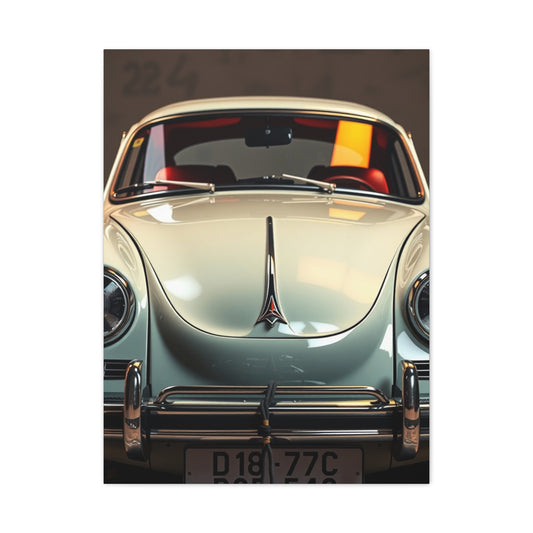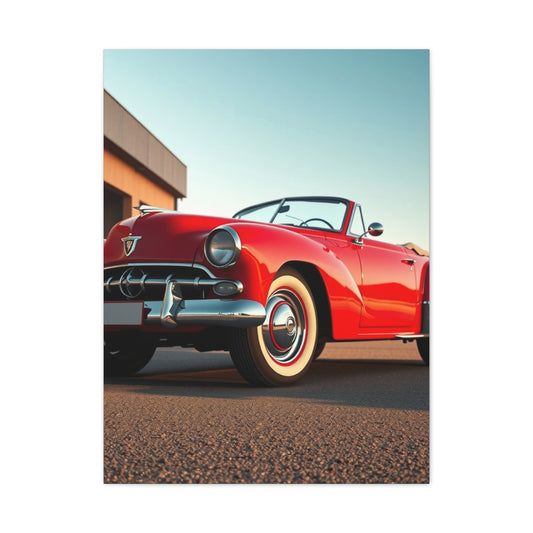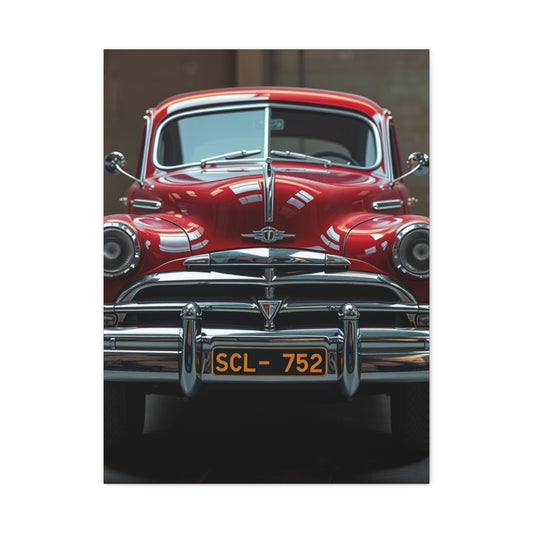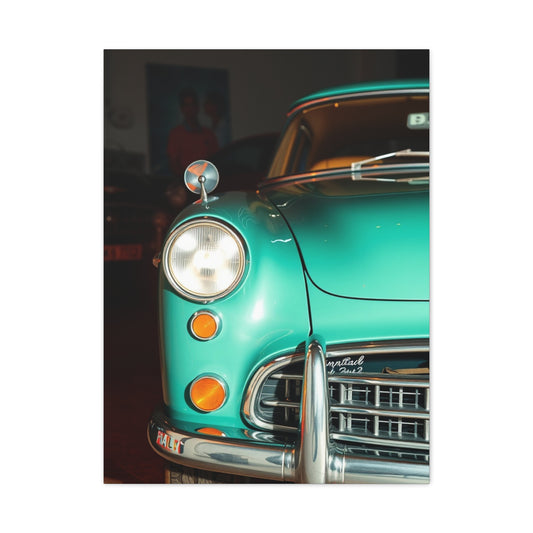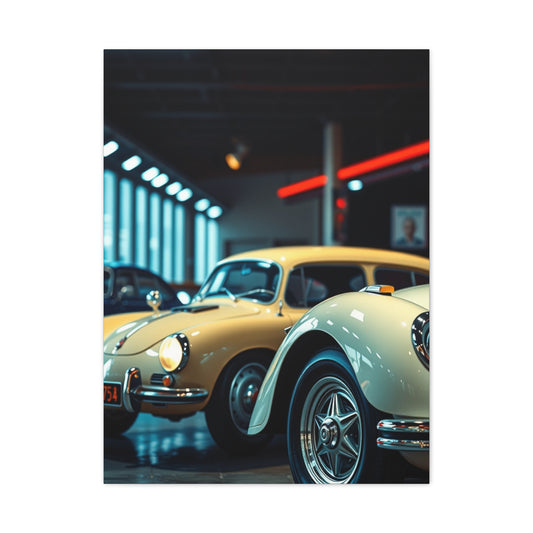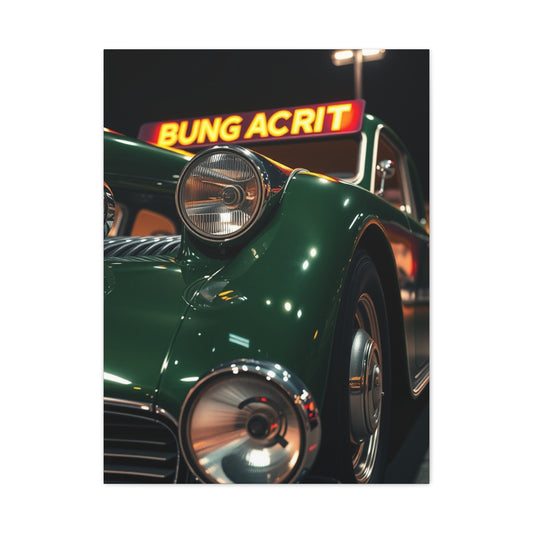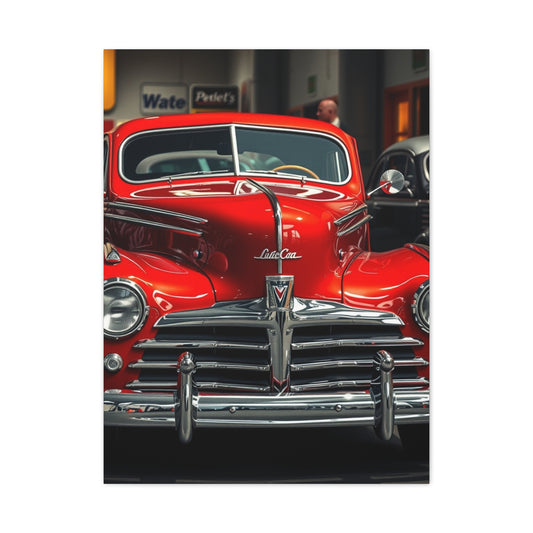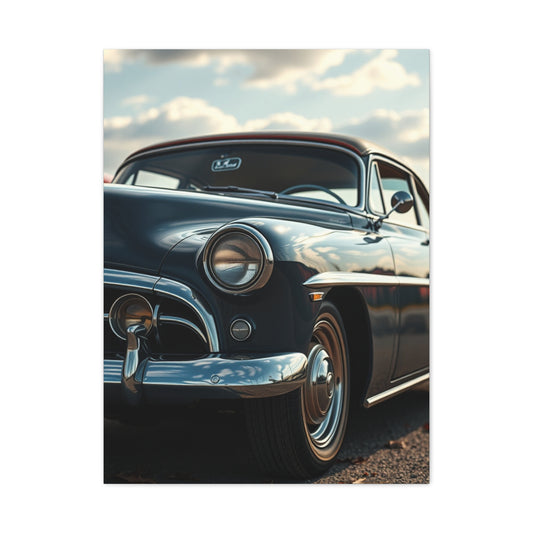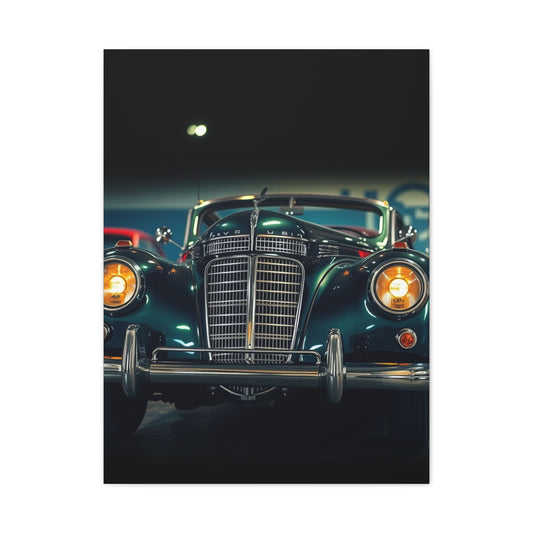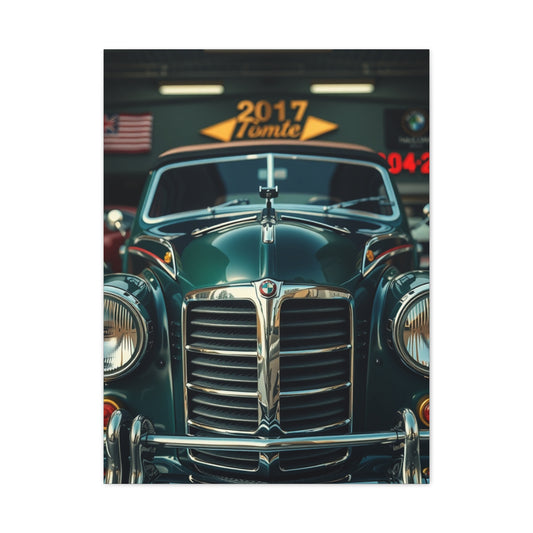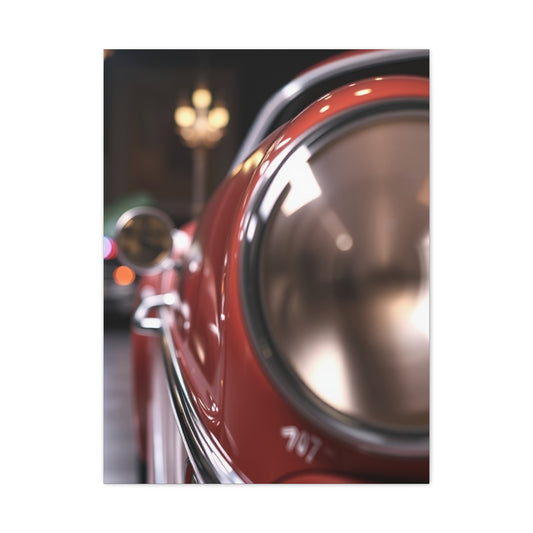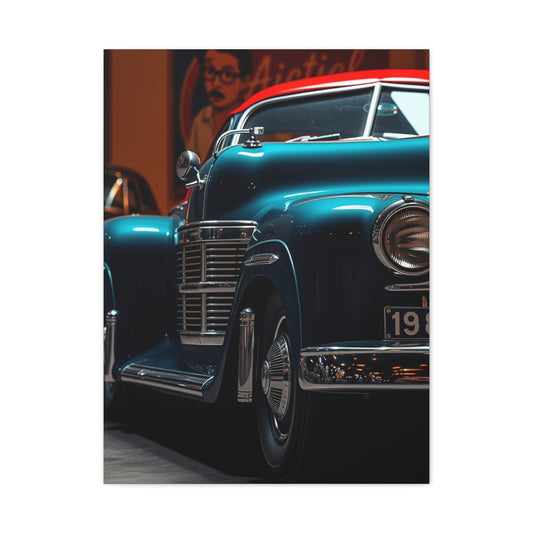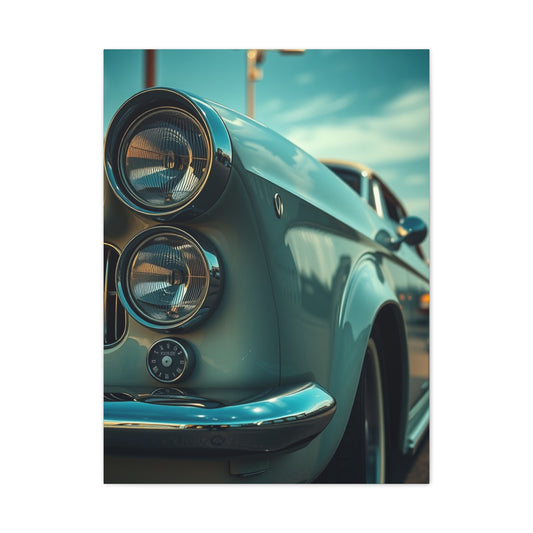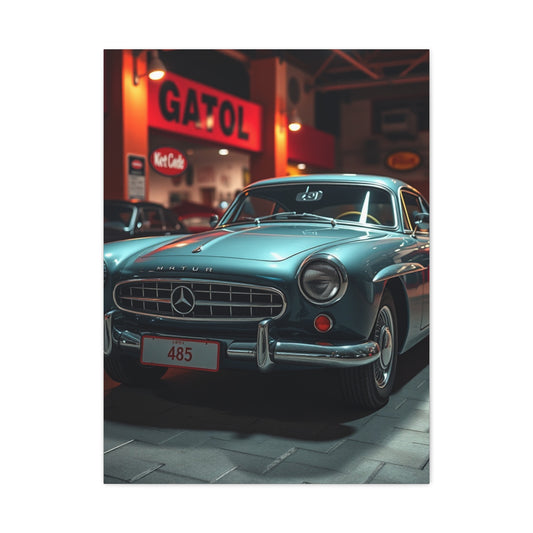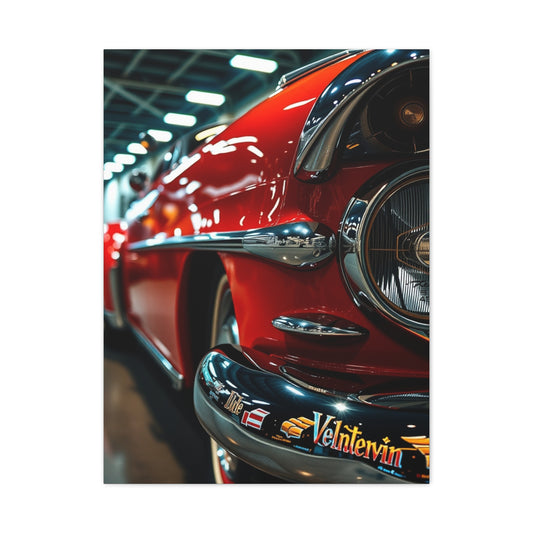-
Grand Touring Tableau Wall Art & Canvas Print
Regular price From $141.23 USDRegular priceUnit price per -
Vintage Vehicular Visions Wall Art & Canvas Print
Regular price From $141.23 USDRegular priceUnit price per -
Nostalgic Drive Collection Wall Art & Canvas Print
Regular price From $141.23 USDRegular priceUnit price per -
Timeless Wheels Artistry Wall Art & Canvas Print
Regular price From $141.23 USDRegular priceUnit price per -
Heritage Motoring Masterpiece Wall Art & Canvas Print
Regular price From $141.23 USDRegular priceUnit price per -
Legendary Car Legacy Canvas Wall Art & Canvas Print
Regular price From $141.23 USDRegular priceUnit price per -
Vintage Velocity Vignettes Wall Art & Canvas Print
Regular price From $141.23 USDRegular priceUnit price per -
Antiquarian Engine Artistry Wall Art & Canvas Print
Regular price From $141.23 USDRegular priceUnit price per -
Prestige Roadster Portraits Wall Art & Canvas Print
Regular price From $141.23 USDRegular priceUnit price per -
Heritage Highway Harmony Wall Art & Canvas Print
Regular price From $141.23 USDRegular priceUnit price per -
Antique Automobile Elegance Wall Art & Canvas Print
Regular price From $141.23 USDRegular priceUnit price per -
Deco Drive Opus Wall Art & Canvas Print
Regular price From $141.23 USDRegular priceUnit price per -
Retro Ride Revelry Art Wall Art & Canvas Print
Regular price From $141.23 USDRegular priceUnit price per -
Classic Car Reverie Canvas Wall Art & Canvas Print
Regular price From $141.23 USDRegular priceUnit price per -
Refined Retro Roadway Wall Art & Canvas Print
Regular price From $141.23 USDRegular priceUnit price per -
Opulent Automotive Odyssey Wall Art & Canvas Print
Regular price From $141.23 USDRegular priceUnit price per -
Historic Auto Aesthetic Wall Art & Canvas Print
Regular price From $141.23 USDRegular priceUnit price per -
Sophisticated Speed Legends Wall Art & Canvas Print
Regular price From $141.23 USDRegular priceUnit price per
Automotive Metal Wall Art: The Complete Interior Design Guide for Car Enthusiasts
Embracing automotive aesthetics within residential and commercial environments has evolved into a sophisticated design movement that celebrates mechanical engineering excellence through artistic expression. In recent years, metallic vehicular wall installations have emerged as the pinnacle of this aesthetic evolution, offering three-dimensional sculptural elements that capture the spirit of automotive passion while elevating the overall atmosphere of an interior. These creations are more than decorative objects; they embody a fusion of industrial artistry and personal identity, bridging the gap between mechanical design and contemporary interior styling.
For many enthusiasts, the automobile represents more than just a mode of transportation—it embodies innovation, freedom, and craftsmanship. Traditional poster displays or memorabilia collections, while nostalgic, no longer satisfy the desire for immersive automotive-inspired living spaces. Metallic sculptural installations, however, transform appreciation into a tangible and lasting form of expression. Crafted with precision and often using industrial-grade materials, these pieces mimic the strength, elegance, and modernity of vehicles themselves. Their reflective surfaces, intricate contours, and bold presence command attention, making them focal points that redefine a room’s character.
In residential settings, these installations bring an energy that resonates with the homeowner’s passion. A sleek metallic rendering of a classic sports car, for instance, can symbolize ambition, progress, and refined taste, while simultaneously energizing the space. In commercial spaces, such as automotive showrooms, lounges, or even offices, these pieces communicate values of innovation, performance, and sophistication, aligning design aesthetics with brand identity. The presence of metallic vehicular wall art becomes a visual storytelling tool, blending culture with commerce.
Beyond their visual appeal, automotive metallic installations serve multiple functional purposes. They become catalysts for conversation, sparking discussions between enthusiasts and casual observers alike. They enhance moods by injecting dynamism into static spaces, often creating feelings of speed, motion, and excitement. Most importantly, they act as cultural expressions, demonstrating how deeply the automotive world influences modern lifestyle and design philosophy.
Ultimately, integrating these installations into interior environments reflects a broader cultural shift—one where mechanical artistry is celebrated not only on the road but within everyday living spaces. By combining precision engineering with creative expression, metallic automotive wall installations transform interiors into vibrant landscapes of passion, innovation, and style. They stand as testaments to the enduring relationship between humans and machines, embodying both personal pride and artistic sophistication.
Revolutionary Approach to Automotive Interior Design
The contemporary approach to incorporating vehicular aesthetics into interior design has evolved tremendously over recent decades. What was once limited to posters, framed photographs, or miniature collectibles has now expanded into a fully immersive design movement that integrates automotive artistry into living and working spaces. Today’s automotive wall sculptures represent a revolutionary leap, transcending traditional two-dimensional displays and offering three-dimensional artistic expressions that capture the essence of mechanical engineering excellence. These metallic masterpieces not only highlight the beauty of automotive design but also function as conversation starters, focal points, and living testaments to the owner’s appreciation for craftsmanship and innovation.
At the core of this evolution lies the fusion of industrial design principles with residential and commercial aesthetics. Unlike conventional decorative elements, metallic automotive wall art carries a sense of authenticity and strength that resonates with enthusiasts and design-conscious individuals alike. These pieces often feature carefully engineered contours, polished or brushed finishes, and bold geometric forms that mirror the precision of actual vehicles. Unlike canvas prints or flat imagery, their inherent structural integrity and dimensional depth create tactile appeal, allowing viewers to experience design as both art and engineering.
One of the most striking aspects of these installations is the interplay between light and shadow. Metallic surfaces react uniquely to changing illumination, creating dynamic visual effects that evolve throughout the day. Morning light might accentuate sharp edges and intricate details, while evening lighting enhances depth and contrast, transforming the piece into a shifting artwork that never feels static. This dynamic quality ensures that the decorative investment remains perpetually engaging and continues to inspire long after its installation.
Beyond aesthetics, the psychological benefits of automotive-inspired design should not be underestimated. Surrounding oneself with imagery and objects tied to personal passions fosters emotional connection and well-being. Research suggests that environments reflecting individual interests and values can enhance mood stability, increase motivation, and strengthen identity. For many, automobiles symbolize freedom, innovation, speed, and achievement. By incorporating metallic automotive sculptures into daily living spaces, individuals create constant visual reminders of these aspirations, reinforcing ambition and personal pride.
In residential interiors, these installations bring vitality and character. A metallic sculpture inspired by a vintage sports car can embody nostalgia and timeless elegance, while a modern supercar-inspired piece can energize a space with sleek sophistication. In professional settings, such as offices, showrooms, or lounges, these works of art serve as powerful brand statements. They communicate innovation, performance, and attention to detail, aligning the design of the environment with values of excellence and progress.
Equally important is the cultural statement these artworks make. Automotive design has long been celebrated as a pinnacle of human ingenuity, combining functionality with artistry. Incorporating these elements into interiors is not just about decoration—it is about honoring a global cultural icon. Cars represent journeys, independence, and human achievement, and metallic wall sculptures transform those symbolic values into permanent visual landmarks within a space.
Ultimately, the revolutionary approach to automotive interior design reflects a broader trend in contemporary living: the desire to merge passion with environment, lifestyle with identity, and engineering with artistry. Metallic vehicular wall art is not simply about filling a blank wall; it is about transforming ordinary spaces into extraordinary reflections of personal taste and cultural appreciation. By blending precision engineering with creative expression, these installations redefine what it means to live among art, offering timeless beauty, emotional resonance, and a dynamic sense of innovation.
Material Excellence in Automotive Wall Sculptures
Contemporary automotive wall art utilizes various metallic substrates, each offering distinct advantages for different applications and environments. Aluminum compositions provide lightweight solutions perfect for residential applications where wall mounting constraints exist. Steel variants offer superior durability and dramatic visual weight, ideal for commercial installations or spaces requiring statement pieces.
Stainless steel automotive sculptures resist corrosion while maintaining brilliant reflective properties that enhance lighting effects. Bronze and copper variants develop distinctive patinas over time, creating evolving artistic expressions that mature alongside your interior design scheme. Each material choice influences the overall aesthetic impact, maintenance requirements, and longevity of your investment.
The manufacturing processes employed in creating these artistic pieces have advanced significantly, incorporating laser cutting, plasma cutting, and precision welding techniques. These technologies enable intricate detail reproduction, from subtle body line representations to complex mechanical component illustrations. The precision achievable through modern fabrication methods ensures each piece accurately captures the essence of specific automotive designs.
Surface finishing techniques further enhance the visual appeal and durability of automotive wall sculptures. Powder coating applications provide vibrant color options while protecting underlying metal surfaces from environmental factors. Brushed finishes create subtle texture variations that interact beautifully with ambient lighting. Polished surfaces offer mirror-like reflectivity that amplifies spatial perception within smaller rooms.
Categorizing Automotive Wall Art Styles
Vintage Automotive Era Representations
Classical automotive periods offer rich inspiration for wall art collections, spanning from early horseless carriages through mid-century muscle car dominance. These historical representations capture the romance and innovation of automotive evolution, celebrating engineering milestones that shaped transportation history.
Vintage racing scenes immortalize legendary drivers and iconic racing venues, bringing motorsport heritage into contemporary living spaces. These pieces often incorporate period-appropriate typography, color schemes, and compositional elements that transport viewers to specific historical moments. The nostalgia factor associated with vintage automotive art creates emotional connections that transcend mere decorative function.
Art deco influences frequently appear in vintage automotive wall sculptures, reflecting the design philosophies that shaped automotive aesthetics during the industry's formative decades. These pieces celebrate the marriage of form and function that defined early automotive design, honoring pioneers who established fundamental principles still influencing contemporary vehicle development.
Historical racing liveries provide colorful inspiration for wall art collections, celebrating iconic team colors, sponsor relationships, and driver personalities that defined motorsport eras. These representations serve as tributes to racing heritage while adding vibrant energy to interior environments.
Contemporary Supercar Interpretations
Modern supercar representations showcase cutting-edge automotive technology through artistic interpretation. These pieces celebrate engineering achievements in aerodynamics, materials science, and propulsion systems that define contemporary high-performance vehicles. The sleek lines and aggressive styling characteristics of modern supercars translate beautifully into metallic wall sculptures.
Hybrid and electric supercar representations acknowledge the industry's technological evolution while maintaining the excitement associated with high-performance vehicles. These pieces demonstrate that environmental consciousness and performance excellence can coexist, reflecting contemporary automotive industry values.
Limited edition supercar tributes celebrate exclusive vehicles that represent the pinnacle of automotive achievement. These artistic interpretations capture the essence of vehicles that few will ever experience firsthand, making automotive excellence accessible through artistic representation.
Track-focused supercar designs emphasize aerodynamic elements, roll cage structures, and racing modifications that distinguish competition vehicles from street-legal variants. These pieces appeal to motorsport enthusiasts who appreciate the technical aspects of vehicle preparation and performance optimization.
American Muscle Car Heritage
Muscle car representations celebrate a uniquely American contribution to automotive history, emphasizing power, performance, and distinctive styling that defined an entire generation of enthusiasts. These artistic pieces capture the raw energy and rebellious spirit associated with high-performance American vehicles from the 1960s and 1970s.
Detroit's golden age provides endless inspiration for wall art collections, featuring iconic models that established American automotive supremacy in straight-line performance. These representations honor engineering achievements that prioritized horsepower and torque delivery over fuel economy or emissions considerations.
Street racing culture influences many muscle car artistic interpretations, celebrating the underground automotive scene that flourished during the muscle car era. These pieces acknowledge the cultural impact of automotive performance on American society, music, and lifestyle choices.
Restoration project tributes celebrate the dedication required to preserve muscle car heritage, honoring enthusiasts who invest time, resources, and passion into maintaining these mechanical treasures for future generations to appreciate and enjoy.
European Sports Car Elegance
European automotive design philosophy emphasizes precision engineering, refined aesthetics, and balanced performance characteristics that create distinctive artistic inspiration. These representations celebrate the sophistication and technical excellence associated with European automotive manufacturers.
Italian exotic car interpretations capture the passion and artistry that defines brands renowned for combining stunning visual design with exceptional performance capabilities. These pieces emphasize curves, proportions, and styling elements that distinguish Italian automotive design from other regional approaches.
German engineering precision finds expression through artistic representations that celebrate technical excellence, reliability, and innovative solutions that have established German manufacturers as industry leaders in multiple automotive segments.
British sports car heritage provides inspiration for artistic pieces that honor the pioneering spirit and racing success that established British manufacturers as leaders in lightweight sports car development and motorsport achievement.
Japanese Performance Culture
Japanese automotive culture emphasizes technical innovation, reliability, and performance optimization through systematic engineering approaches. Artistic representations of Japanese performance vehicles celebrate the unique aesthetic and technical philosophies that distinguish Japanese automotive design.
Tuning culture influences many Japanese automotive artistic interpretations, acknowledging the enthusiast community that has transformed Japanese vehicles into expressions of personal creativity and performance enhancement. These pieces celebrate the modification culture that has become synonymous with Japanese automotive enthusiasm.
Drift culture representations capture the unique motorsport discipline that originated in Japan and has influenced global automotive enthusiast communities. These artistic pieces emphasize motion, style, and the technical precision required for competitive drifting success.
Strategic Placement Considerations for Maximum Impact
Living Space Integration Strategies
Incorporating automotive wall art into primary living spaces requires careful consideration of existing design elements, color schemes, and architectural features. The goal is achieving harmonious integration that enhances rather than overwhelms the established aesthetic framework.
Scale relationships between wall art pieces and surrounding furniture determine visual balance within the space. Oversized pieces can dominate smaller rooms, while undersized elements may appear insignificant within expansive areas. Professional interior designers recommend maintaining proportional relationships that complement rather than compete with existing furnishings.
Lighting considerations significantly influence the effectiveness of metallic wall art installations. Natural lighting creates dynamic shadow patterns throughout the day, while artificial illumination can be strategically positioned to emphasize specific design elements or create dramatic evening effects.
Color coordination between automotive wall art and existing interior palettes ensures cohesive design integration. Neutral metallic finishes provide versatility across various color schemes, while vibrant automotive colors can serve as accent elements that energize otherwise subdued environments.
Workspace Enhancement Applications
Professional environments benefit from automotive wall art installations that reflect personal interests while maintaining appropriate workplace aesthetics. Subtle automotive references can demonstrate personality without compromising professional image requirements.
Executive offices often incorporate automotive art as conversation starters and relationship building tools, particularly when clients or colleagues share similar automotive interests. These installations can facilitate business relationship development through shared enthusiasm discussions.
Creative workspace environments embrace automotive art as inspiration sources that can stimulate innovative thinking and problem-solving approaches. The engineering excellence represented in automotive design can inspire similar pursuit of excellence in other professional endeavors.
Conference room installations create memorable environments that distinguish organizations from competitors while reflecting company culture and values. Automotive art in business settings can communicate messages about innovation, performance, and attention to detail.
Specialized Automotive Spaces
Garage environments represent natural settings for comprehensive automotive wall art installations where enthusiasts can express their passion without design constraints typically associated with residential living spaces. These environments accommodate larger scale pieces and more extensive collections.
Workshop areas benefit from inspirational automotive imagery that maintains motivation during challenging restoration or modification projects. These installations can serve as reminders of project goals and achievement standards throughout lengthy automotive endeavors.
Showroom applications require sophisticated automotive art installations that complement vehicle displays while creating immersive environments that enhance customer experience and brand perception.
Man cave environments embrace automotive themes as central design elements around which entire spaces are conceptualized and executed. These installations can include comprehensive collections spanning multiple automotive interests and historical periods.
Color Psychology in Automotive Wall Art Selection
Chromatic Impact on Interior Environments
Color selection for automotive wall art significantly influences the psychological atmosphere within interior spaces. Understanding color psychology principles enables informed decisions that support desired emotional responses and behavioral outcomes within decorated environments.
Warm color palettes including reds, oranges, and yellows create energizing environments that stimulate activity and enthusiasm. These colors work particularly well in spaces designed for social interaction or creative endeavors, where elevated energy levels support intended activities.
Cool color palettes featuring blues, greens, and purples promote relaxation and contemplation, making them suitable for spaces intended for rest or focused work. These colors can help balance the excitement associated with automotive themes while maintaining sophistying sophistication.
Monochromatic schemes utilizing various shades of single colors create sophisticated, unified aesthetic statements that emphasize form and texture rather than chromatic contrast. These approaches work particularly well in contemporary interior design schemes that prioritize minimalist principles.
Metallic Finish Considerations
Natural metallic finishes including aluminum, steel, and copper provide versatility across various interior color schemes while maintaining authentic industrial aesthetic qualities. These finishes complement both warm and cool color palettes without creating chromatic conflicts.
Painted metallic surfaces offer expanded color options while retaining the dimensional qualities that distinguish metal art from alternative mediums. These applications enable precise color matching with existing interior elements while maintaining the structural integrity of metallic substrates.
Patinated finishes create unique surface characteristics that develop over time, providing evolving artistic expressions that mature alongside interior design schemes. These treatments work particularly well in traditional or rustic design contexts where aged appearances enhance authenticity.
Polished surfaces maximize light reflection and spatial perception enhancement, making them ideal for smaller spaces where visual expansion is desired. These finishes require increased maintenance but provide unparalleled visual impact when properly maintained.
Installation Techniques and Mounting Solutions
Structural Mounting Considerations
Proper installation of automotive wall art requires understanding weight distribution, wall construction methods, and appropriate mounting hardware selection. Professional installation ensures safety while maximizing visual impact and longevity of artistic investments.
Wall stud location and mounting point distribution prevent concentrated stress that could result in mounting failure or wall damage. Professional installers utilize electronic stud finders and measure distribution patterns to ensure secure mounting point identification.
Weight capacity calculations consider both static loads and dynamic forces that may occur during building movement or environmental changes. Safety factors ensure installations remain secure throughout their intended lifespan regardless of environmental conditions.
Mounting hardware selection depends on wall construction methods, artwork weight, and desired adjustability for future repositioning. Professional grade hardware provides security while enabling modifications if interior design changes require artwork repositioning.
Electrical Integration for Enhanced Effects
Integrated lighting systems can dramatically enhance the visual impact of automotive wall art through strategic illumination that emphasizes dimensional qualities and surface textures. These installations require electrical planning during initial installation phases.
LED strip lighting provides energy-efficient accent illumination that can be programmed for various intensity levels and color temperatures throughout different times of day. These systems offer longevity and minimal heat generation compared to traditional lighting alternatives.
Spotlight installations create dramatic shadow effects that emphasize the three-dimensional qualities of metallic wall sculptures. These concentrated light sources can be positioned to create specific visual effects that change throughout the day as natural lighting conditions vary.
Smart lighting integration enables automated control systems that adjust illumination based on occupancy, time of day, or predetermined schedules. These systems maximize energy efficiency while ensuring optimal presentation of artistic installations.
Maintenance and Preservation Strategies
Routine Care Procedures
Metallic automotive wall art requires specific maintenance procedures to preserve appearance and structural integrity throughout its lifespan. Understanding proper care techniques prevents damage while maintaining optimal visual impact.
Dust accumulation affects both appearance and finish integrity over time. Regular cleaning with appropriate materials prevents buildup that can cause permanent staining or surface etching. Microfiber cloths provide effective cleaning without scratching delicate surface finishes.
Moisture control prevents corrosion and finish degradation, particularly in humid environments or spaces with temperature fluctuations. Proper ventilation and climate control systems protect artistic investments from environmental damage.
Surface protection during routine cleaning prevents accidental damage from inappropriate cleaning products or techniques. Understanding material-specific requirements ensures maintenance procedures enhance rather than compromise artistic installations.
Long-term Preservation Considerations
Environmental monitoring prevents gradual degradation from factors including ultraviolet exposure, temperature fluctuations, and atmospheric contamination. These considerations become particularly important for valuable or irreplaceable artistic pieces.
Protective coatings can extend the lifespan of metallic finishes while maintaining visual qualities. Professional application ensures optimal protection without compromising aesthetic appeal or authenticity.
Documentation of maintenance procedures and observations enables early identification of potential problems before they result in permanent damage. Regular inspection schedules ensure prompt attention to emerging issues.
Professional restoration services can address damage or aging effects that exceed routine maintenance capabilities. Early intervention often prevents minor issues from developing into expensive restoration requirements.
Economic Considerations and Investment Value
Initial Investment Analysis
Automotive wall art represents various investment levels depending on materials, manufacturing complexity, artistic reputation, and exclusivity factors. Understanding these variables enables informed purchasing decisions that align with budget constraints and aesthetic objectives.
Mass-produced pieces offer accessibility for enthusiasts with limited budgets while providing authentic automotive aesthetics for interior design applications. These options enable extensive collections without significant financial investment.
Limited edition releases provide exclusivity and potential appreciation value while offering superior materials and manufacturing quality. These investments often include authentication documentation that supports future value assessments.
Custom commissions enable personalized artistic expressions that reflect specific automotive interests or ownership experiences. These unique pieces often provide maximum personal satisfaction while creating one-of-a-kind installations.
Long-term Value Considerations
Automotive wall art can appreciate in value based on artist reputation, manufacturing quality, and collector interest in specific automotive subjects. Understanding these factors enables investment decisions that consider both aesthetic enjoyment and financial appreciation potential.
Market trends in automotive collectibles influence the desirability and value of related artistic representations. Staying informed about collector interests helps identify pieces with appreciation potential.
Condition maintenance significantly influences long-term value retention for artistic investments. Proper care and preservation techniques protect financial investment while ensuring continued aesthetic enjoyment.
Authentication documentation supports value assessments and enables confident transactions if future sale becomes necessary. Maintaining complete records protects investment value throughout ownership periods.
Cultural Impact of Automotive Art in Interior Design
Sociological Significance of Automotive Passion Display
Displaying automotive interests through wall art communicates personal values, achievements, and aspirations to visitors and family members. These installations serve as non-verbal communication tools that facilitate social connections and relationship building.
Generational connections often develop through shared automotive interests expressed through artistic displays. These installations can bridge age gaps by providing common ground for discussion and experience sharing between family members of different generations.
Cultural identity expressions through automotive art acknowledge regional preferences, national pride, or ethnic heritage associated with specific automotive manufacturers or design philosophies. These displays celebrate cultural diversity while expressing personal identity.
Community building occurs when automotive enthusiasts recognize kindred spirits through artistic displays that signal shared interests and values. These connections often develop into lasting friendships and collaborative relationships.
Educational Opportunities Through Artistic Display
Automotive wall art provides ongoing educational opportunities for family members and visitors who may not share the owner's level of automotive knowledge. These installations can spark curiosity and learning about automotive history, technology, and cultural significance.
Historical context conveyed through period-appropriate automotive art helps younger generations understand technological evolution and cultural changes that shaped society. These educational opportunities occur naturally through daily exposure to historical representations.
Technical appreciation develops through exposure to artistic representations that emphasize engineering achievements and design solutions. These installations can inspire interest in science, technology, engineering, and mathematics fields.
Cultural awareness expands through exposure to automotive designs from various global manufacturers and design philosophies. These experiences broaden perspectives and appreciation for international collaboration and innovation.
Technology Integration in Modern Automotive Wall Art
Digital Enhancement Possibilities
Contemporary technology enables automotive wall art installations that incorporate digital elements including programmable LED systems, interactive displays, and augmented reality capabilities. These innovations expand traditional artistic boundaries while maintaining core aesthetic principles.
Programmable lighting systems create dynamic installations that change throughout the day or respond to environmental conditions. These systems can simulate racing environments, sunset drives, or other atmospheric conditions that enhance the automotive experience.
Interactive elements enable viewer engagement through touch sensors, motion detection, or smartphone integration. These features can provide additional information, simulate engine sounds, or create personalized experiences based on viewer preferences.
Augmented reality applications overlay digital information onto physical installations, providing detailed specifications, historical information, or virtual experiences related to represented vehicles. These technologies bridge physical and digital automotive enthusiasm.
Smart Home Integration
Integration with home automation systems enables automotive wall art to participate in comprehensive smart home environments. These installations can respond to occupancy patterns, entertainment system status, or predetermined schedules.
Voice control compatibility allows hands-free operation of integrated lighting and digital elements. These systems provide convenience while maintaining the sophisticated aesthetic qualities expected from premium interior installations.
Remote monitoring capabilities enable supervision of installation status and performance from mobile devices. These features provide peace of mind while ensuring optimal presentation regardless of occupancy status.
Energy management systems optimize power consumption for integrated lighting and digital elements while maintaining desired visual impact. These systems support environmental responsibility while controlling operating costs.
Global Automotive Design Influences in Wall Art
Regional Design Philosophy Representations
Different global regions have developed distinctive automotive design philosophies that translate beautifully into artistic representations. Understanding these regional characteristics enables curated collections that celebrate diverse automotive heritage and innovation.
European design emphasis on precision engineering and sophisticated aesthetics provides inspiration for artistic pieces that celebrate technical excellence and refined styling approaches. These representations often emphasize proportion, detail refinement, and materials quality.
American automotive culture celebrates power, boldness, and individualistic expression through distinctive styling and performance characteristics. Artistic representations of American vehicles often emphasize muscular proportions, aggressive styling elements, and high-performance capabilities.
Asian automotive philosophy balances technical innovation with efficiency and reliability considerations, creating distinctive aesthetic approaches that differ from Western design priorities. These representations celebrate precision manufacturing and innovative problem-solving approaches.
Cross-Cultural Automotive Appreciation
Global automotive enthusiasm transcends cultural boundaries, creating opportunities for artistic installations that celebrate international cooperation and shared passion for automotive excellence. These displays demonstrate the unifying power of automotive enthusiasm across diverse populations.
Collaborative automotive projects between international manufacturers provide inspiration for artistic pieces that celebrate cooperation and shared expertise. These representations acknowledge the global nature of contemporary automotive development.
Racing heritage from various international venues provides rich inspiration for wall art collections that celebrate global motorsport achievement and cultural exchange. These pieces honor the international community that supports competitive automotive events.
Cultural exchange through automotive design influences creates artistic opportunities that acknowledge international collaboration and mutual inspiration between global design teams and cultural traditions.
Future Trends in Automotive Wall Art Development
Emerging Technologies and Artistic Applications
Advanced manufacturing technologies including 3D printing, advanced metallurgy, and precision fabrication methods continue expanding possibilities for automotive wall art creation. These developments enable increasingly sophisticated artistic expressions while reducing manufacturing costs.
Sustainable materials and manufacturing processes address environmental concerns while maintaining aesthetic quality and durability standards. These developments align automotive art with contemporary environmental consciousness and responsibility expectations.
Customization technologies enable personalized artistic creations at mass production price points, democratizing access to unique automotive art installations. These capabilities expand market accessibility while maintaining exclusivity through personalization options.
Interactive technology integration continues evolving, creating possibilities for automotive wall art that responds to viewer presence, environmental conditions, or remote control systems. These developments enhance engagement while maintaining aesthetic sophistication.
Market Evolution and Consumer Preferences
Demographic changes influence automotive wall art preferences as younger generations bring different aesthetic priorities and technology expectations to the market. Understanding these trends enables informed investment and collection development decisions.
Environmental consciousness affects material choices and manufacturing processes as consumers increasingly prioritize sustainable products that align with personal values. These preferences drive innovation in materials science and production methods.
Digital integration expectations continue expanding as consumers become accustomed to smart home technologies and interactive experiences. Automotive wall art installations increasingly incorporate these capabilities to meet market expectations.
Customization demands grow as consumers seek unique expressions of personal automotive interests rather than mass-produced alternatives. This trend drives innovation in manufacturing flexibility and personalization capabilities.
Conclusion
The integration of automotive metal wall art into contemporary interior design represents far more than simple decorative enhancement. These sophisticated artistic installations serve as powerful expressions of personal passion, cultural identity, and aesthetic sophistication that transform living spaces into dynamic environments reflecting the owner's deepest automotive enthusiasms.
Throughout this comprehensive exploration, we have examined the multifaceted nature of automotive wall art, from material science considerations and manufacturing excellence to strategic placement principles and cultural significance. The evolution of this art form demonstrates the enduring appeal of automotive design as artistic inspiration, while contemporary technological advances continue expanding creative possibilities and installation capabilities.
The psychological benefits of surrounding oneself with representations of automotive excellence extend beyond mere aesthetic pleasure, creating environments that inspire, motivate, and reinforce personal identity through daily interaction with carefully selected artistic installations. These pieces serve as constant reminders of engineering achievement, design innovation, and the relentless pursuit of perfection that defines automotive excellence across all manufacturers and historical periods.
Investment considerations encompass both financial and emotional dimensions, as quality automotive wall art appreciates in value while providing decades of aesthetic enjoyment and cultural enrichment. The careful selection of pieces that align with personal automotive interests, interior design objectives, and long-term collection goals ensures maximum satisfaction from these significant investments in artistic expression.
Regional automotive design philosophies offer rich inspiration for curated collections that celebrate global automotive heritage while acknowledging the unique contributions of different cultural approaches to vehicle development. These international perspectives create opportunities for educational enrichment and cultural appreciation that extend far beyond simple automotive enthusiasm.
Technological integration possibilities continue expanding the boundaries of traditional wall art, incorporating digital elements, interactive capabilities, and smart home integration that enhance rather than compromise the fundamental aesthetic appeal of metallic automotive sculptures. These innovations demonstrate the dynamic nature of automotive art as it adapts to contemporary expectations while maintaining core artistic principles.
The maintenance and preservation of these artistic investments requires understanding of material science principles and proper care techniques that protect financial investment while ensuring continued visual impact throughout extended ownership periods. Professional installation and routine maintenance procedures maximize longevity while preserving the sophisticated aesthetic qualities that distinguish premium automotive wall art installations.
Cultural and social benefits of automotive wall art displays create opportunities for relationship building, educational enrichment, and community connection through shared appreciation of automotive excellence. These installations facilitate conversations, inspire curiosity about automotive history and technology, and create lasting memories associated with the spaces they occupy.
Environmental considerations increasingly influence material selection and manufacturing processes as the industry responds to consumer demand for sustainable products that align with contemporary environmental consciousness. These developments ensure the long-term viability of automotive wall art as consumer preferences evolve toward more responsible consumption patterns.
The future of automotive wall art promises continued innovation in materials science, manufacturing technologies, and artistic expression possibilities as global automotive culture continues evolving. Electric vehicle adoption, autonomous driving technologies, and sustainable transportation solutions will undoubtedly influence artistic representations while maintaining the fundamental appeal of automotive design as artistic inspiration.
For enthusiasts seeking to transform their living or working spaces into sophisticated expressions of automotive passion, metallic wall art represents an unparalleled opportunity to create environments that inspire, educate, and continuously provide aesthetic pleasure. The careful selection and installation of these artistic pieces creates lasting legacies that celebrate automotive excellence while enriching daily life through constant interaction with representations of human engineering achievement and design innovation.
The investment in quality automotive wall art extends beyond mere decoration, creating opportunities for personal expression, cultural education, and aesthetic enrichment that provide value throughout extended ownership periods. These installations demonstrate commitment to quality, attention to detail, and appreciation for the engineering excellence that defines automotive achievement across all historical periods and global regions.
As the automotive industry continues evolving through electrification, automation, and sustainable development priorities, the artistic representation of automotive excellence ensures preservation of automotive heritage while celebrating contemporary innovation. These installations serve as bridges between automotive history and future developments, maintaining cultural continuity while embracing technological advancement.
The sophistication achievable through careful curation and professional installation of automotive wall art creates interior environments that rival gallery exhibitions while maintaining the personal connection essential for daily enjoyment. These installations demonstrate that automotive enthusiasm and refined aesthetic sensibilities can coexist harmoniously, creating spaces that inspire and energize while maintaining sophisticated design principles that enhance rather than compromise overall interior design objectives.


